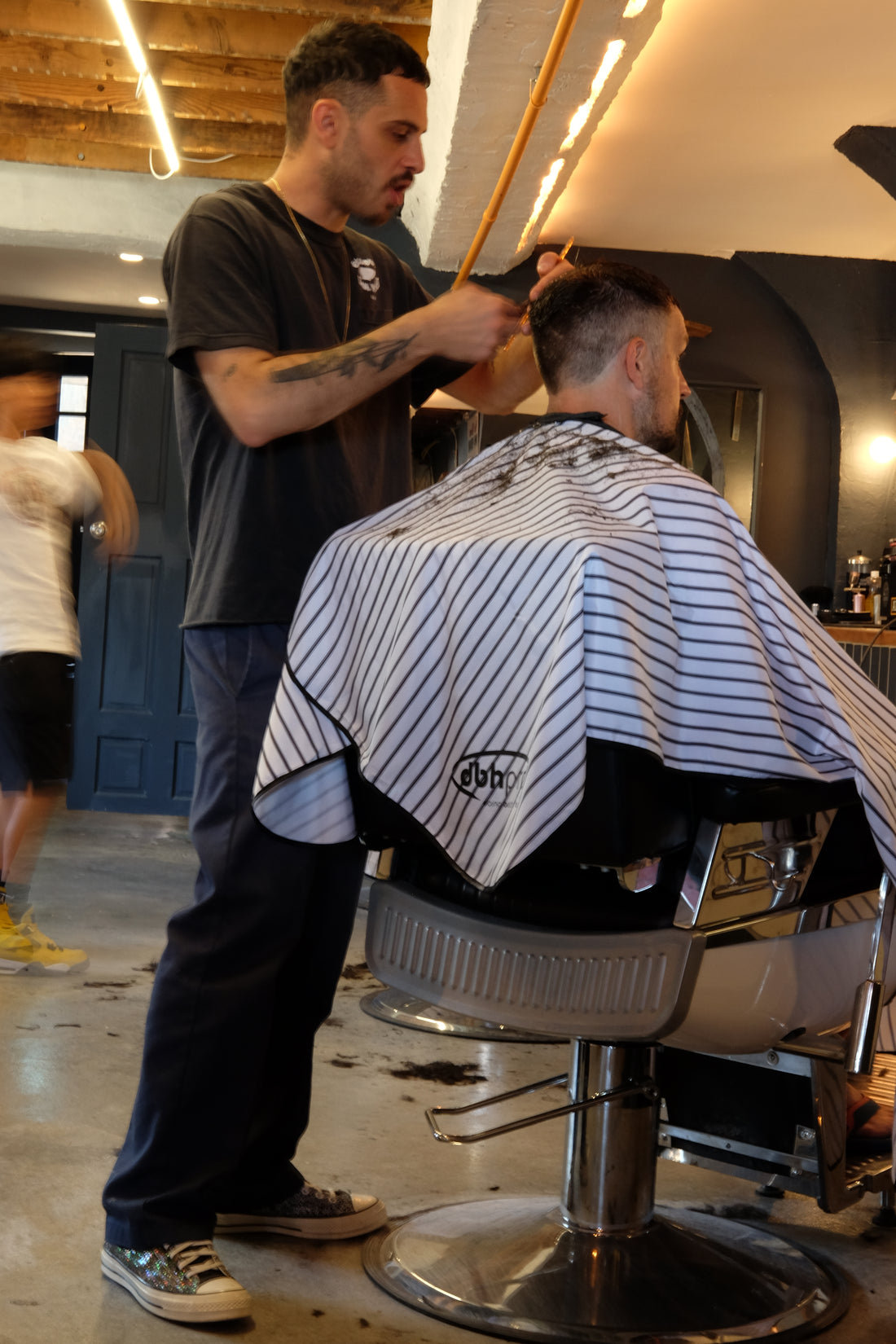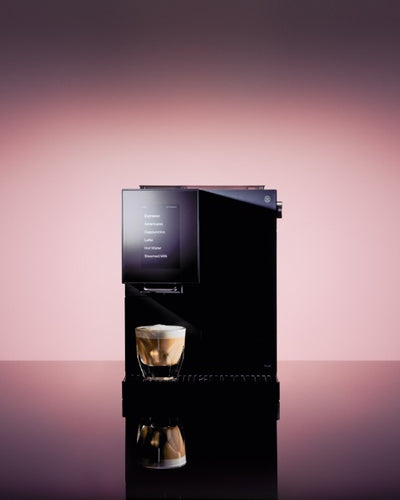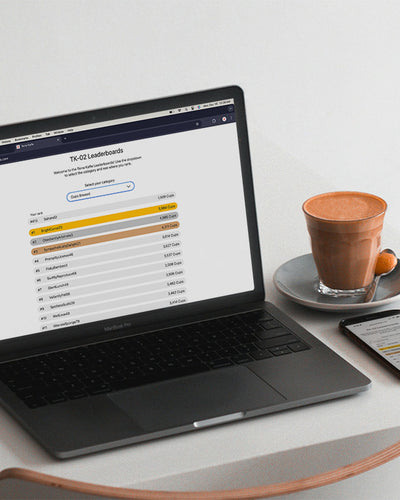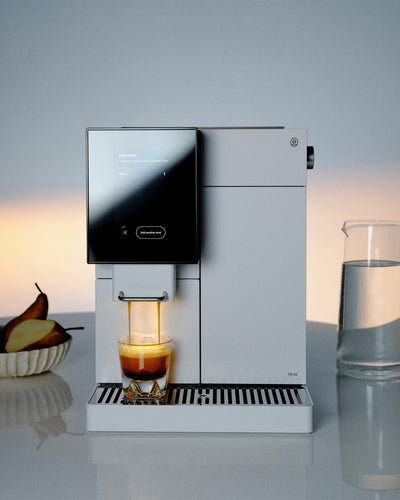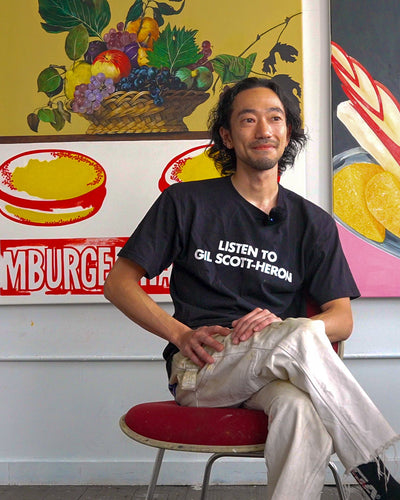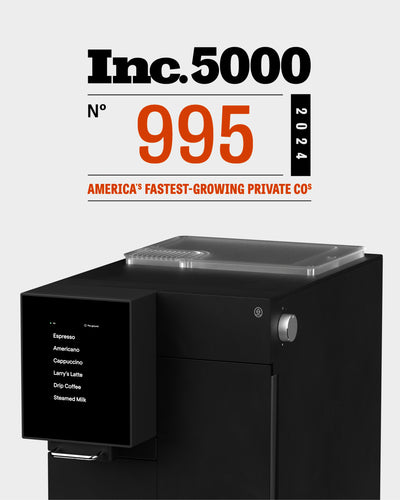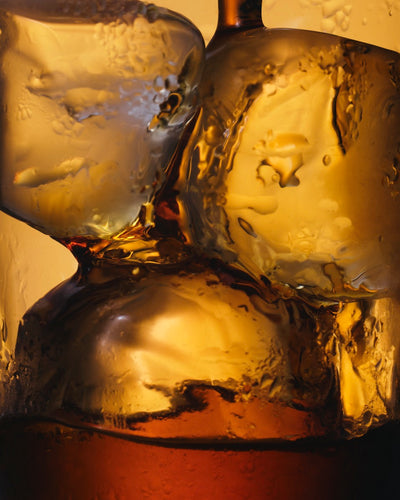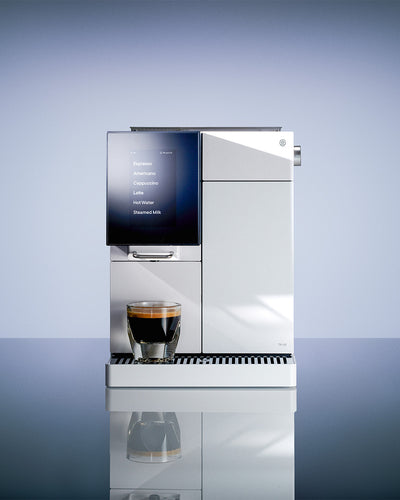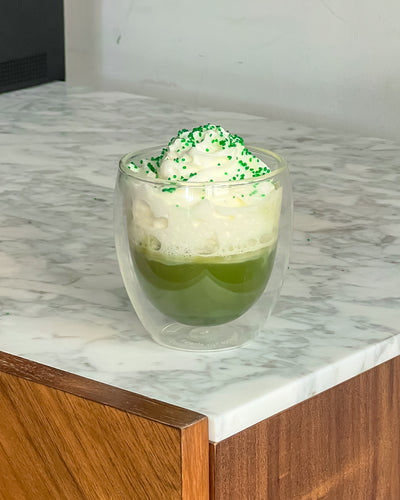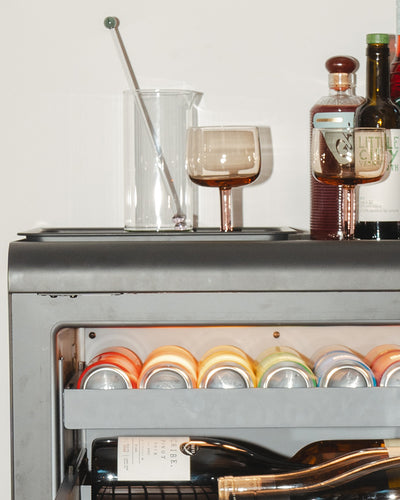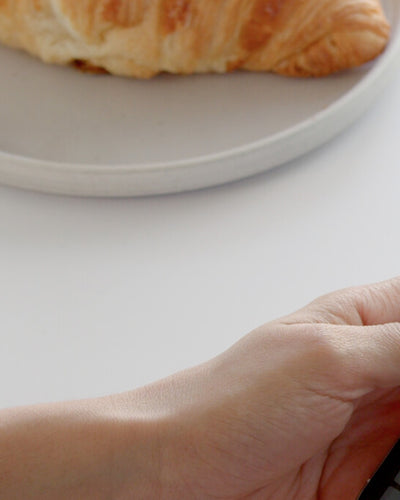Joe Falcone and Jackson Graham didn’t expect the outpouring of support they found after opening their shop and showroom in Rockaway, Queens. They didn’t anticipate the Covid-19 pandemic keeping them in limbo, either. They did know one thing from the start, though. When Joe Falcone made an early name for himself cutting the fellow local’s hair and designing boards for the eclectic surf community, he and his business partner Jackson Graham always counted on something like the Almeda Club making waves.
Since opening in the late summer of 2019, The Almeda Club has garnered both neighborhood notoriety and big time celebrity for its offerings in surfboards, apparel, spas services, and more. New York rapper (and long-time boogie boarder) Action Bronson got a custom-made board, courtesy of Joe and team, and Jonah Hill has been spotted in Almeda apparel as well.
We sat down with Joe and Jackson to learn more about how they’re cutting hair, shaping surfboards, and building community in Rockaway, New York.
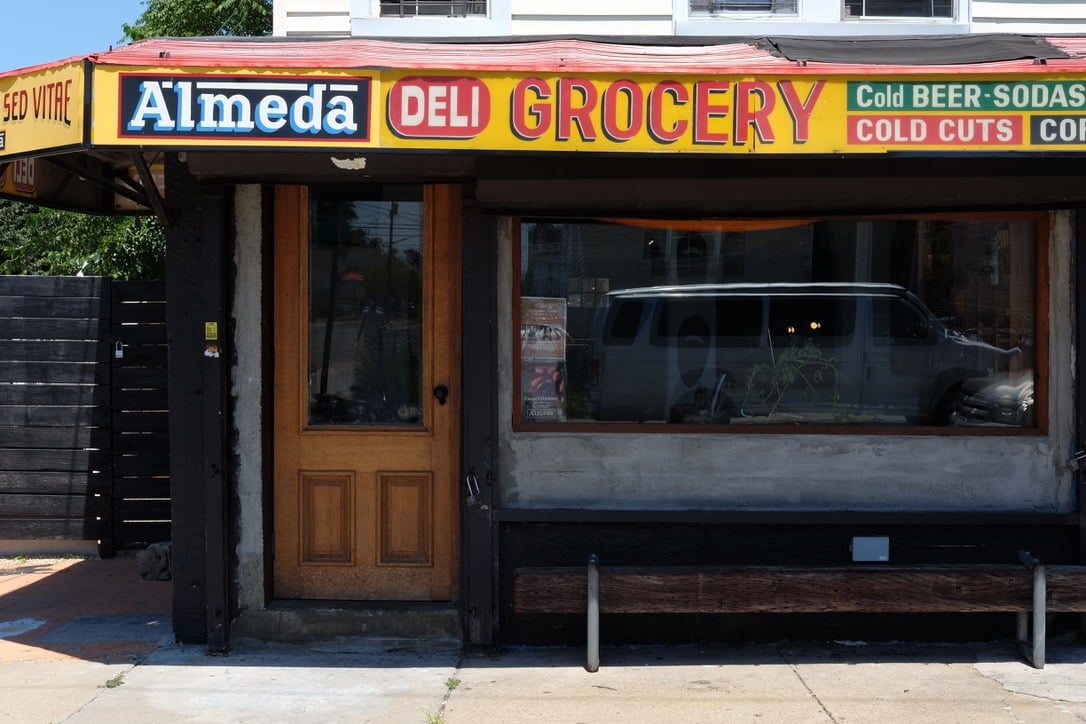
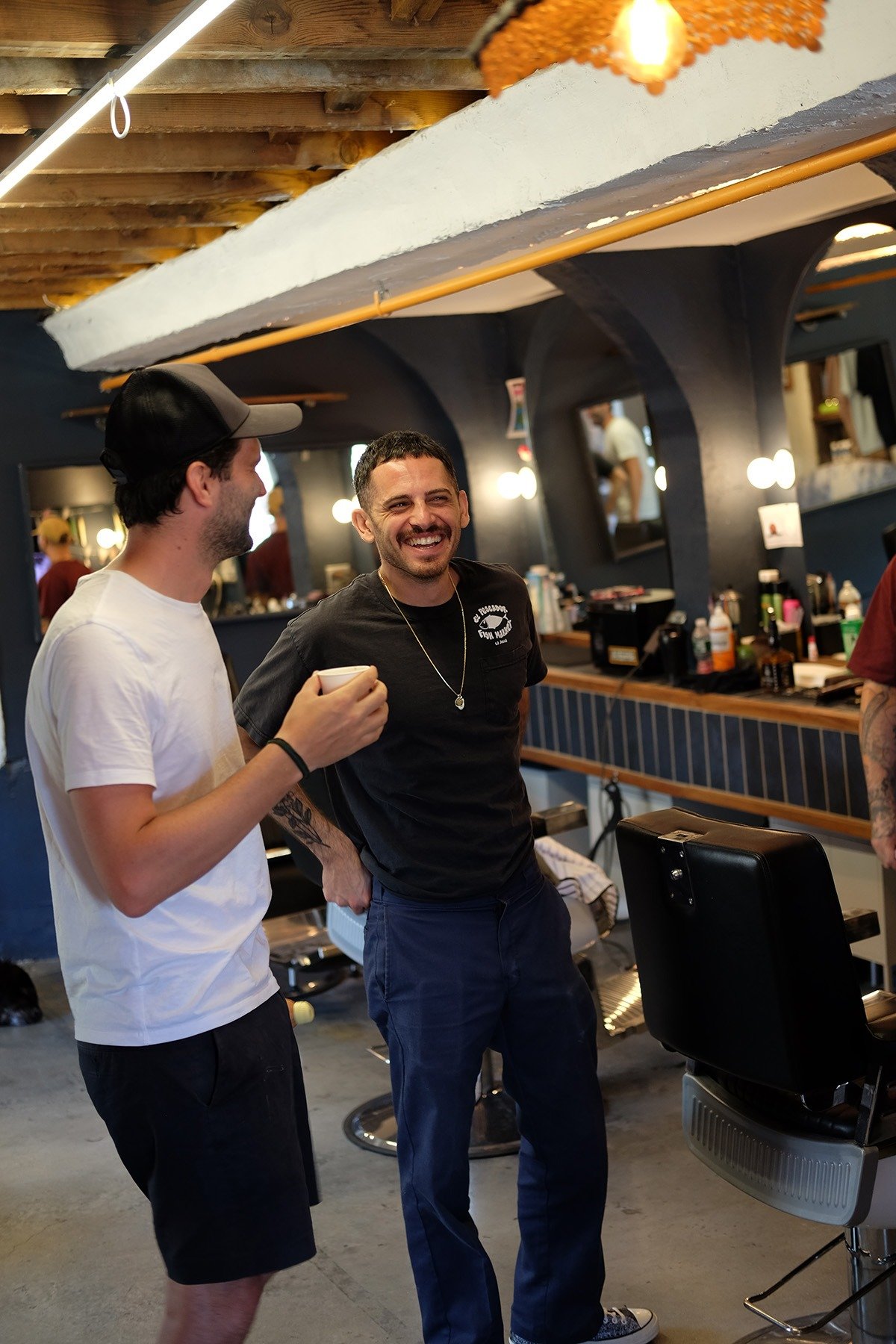
Thanks for talking to us today — First things first, how did you two get to know each other?
JG: You know, we grew up together. I probably started hanging out with Joe when I was 11 or 12. We were part of this huge wolfpack of friends, and Joe was the oldest. He was like the leader of the pack because he has this keen sense of style and surfing and the marriage of the two. Joe would “uncle” us into these different boards, different styles — kinda like setting trends for the younger of us to follow.
And how did Almeda Club come out of that friendship?
JG: Joe always wanted to do some version of a showroom or a surf shop. This place formed out of his shaping bay called Clams Casino. We used to go there after school and watch Joe shape and he would explain to us what was going on or give us a surfboard to go try. It was a really cool part of our childhood. But there was always this ongoing conversation of like "imagine if this wasn't in a shaping bay but in a place. So I started working for Joe for like a second, doing ding repair. And I was awful at it [laughs]. He was trying to teach me. and I literally could not learn, and I didn't have any other job. So he was like "Well I don't wanna fire you completely but maybe there's something else you could do." So I took a liking to doing some administrative work. [Both laugh] I just couldn't learn.
Was ding repair particularly challenging?
JF: There was one day we were working on a ding repair for like 4 hours, right? And I tell Graham: "Alright, here we go. You're gonna sand this thing and the sanding belt rips at 7200 RPM, so you just kinda got to pump it. You have to modulate the pressure." So Graham gets the thing revving. He puts the pad down on the ding and instantly burns through the whole thing. Four hours of pouring and sanding, adding color, and shaping it perfectly. We wrap the fiberglass, we hot coat it, and it's nearly done. It’s about to be polished, and he sanded through the whole thing!
JG: Not my touch, man. And Joe's mad cool about it. And I was like "Ah fuck my bad. Do we have to do it again?" And he was like "yeah, the whole thing. The last 4 hours didn't matter at all. We have to re-do everything [both laugh].
And that’s what landed you on the administrative side of things?
JG: Yeah so I started helping Joe with boards coming in, boards he's working on, boards going out. And Joe has been my barber since I was like 14, and a lot of my other friends’ barber, too. We'd just go to his house and get a haircut. And we had said years before, "imagine if someone could get a surfboard consultation while getting a haircut." And we knew it would work because that’s what was happening anyway.
And I've always had this swing-the-hammer-first mentality of not having a second thought about anything and just going for it. So I just started looking for places. As did Joe. And we found this place [Almeda Club] and I went to Joe and I was like "Yo, it's not a place where we could shape and glass [fiberglass wrapping for surfboards], but it's a retail space and it could be a showroom. And we can do a barbershop, a showroom for your boards, art exhibits, events, stuff like that.”
JF: I had known the spot, too. Cause I was driving around here. So when Graham said "Yo it's a deli," I was like I wonder if it's the yellow and blue deli...And then we ended up here and I was like "Dude, I know this place." I've seen it so many times and I always wondered what the hell it was because I never saw it open.
JG: I was living on this block at the time, so I walked my dog by and it was always dilapidated. Raccoons running in and out. Like it was shot, ya know? But I never saw a For Rent sign. But then all of a sudden I saw a For Rent sign and that clicked. So we called the number and set up a time to see it. I had a dream the night before we saw it — true story — I had this dream that this old guy was walking us through his Victorian house with all these keys, and we asked for how much the rent was and that was the whole dream. But the next day we showed up and the guy wanted the same rent as what he said in the dream. We were like "this is a fucking no-brainer." We have to do this, ya know? First of all, it's like backed by cosmic fucking exploration.
And you said the space was in disrepair when you first found it?
JG: The place had no windows, no backdoor, no back deck. The backyard was a dump, literally a dumping ground. We used to show up to renovate and there'd be a Honda Accord in the backyard. We didn't even know whose it was.
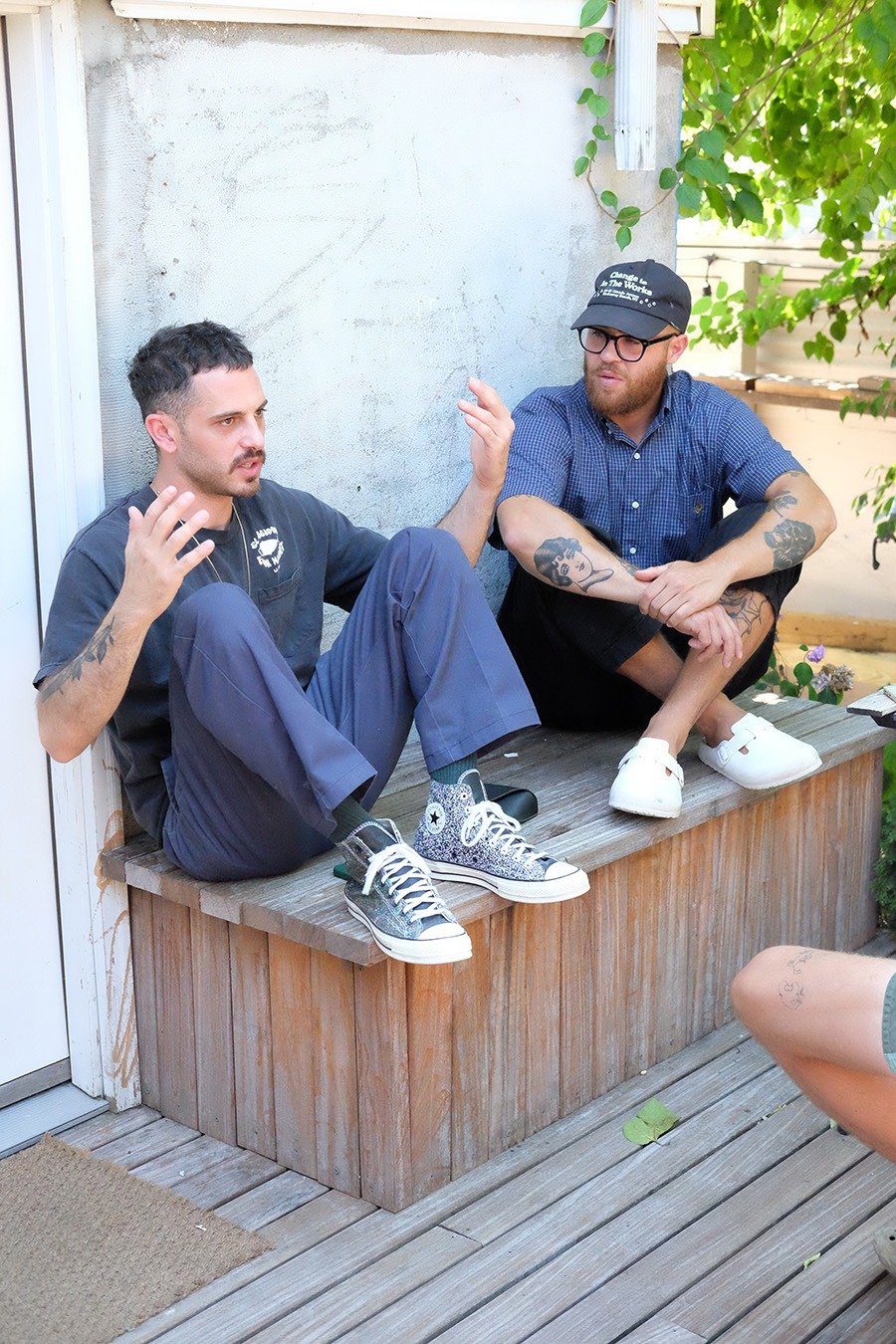
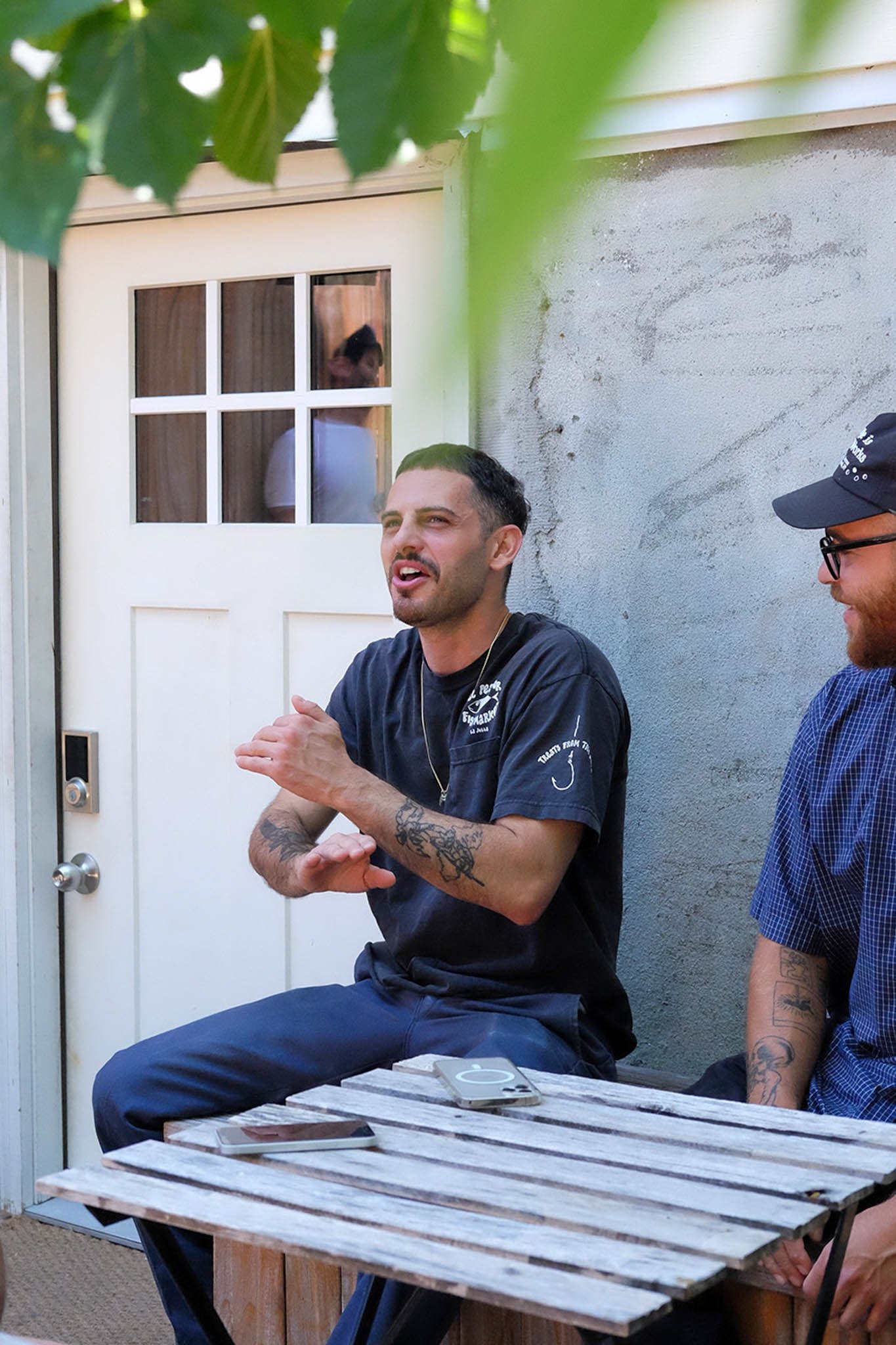
— The pandemic definitely shifted us into more community engagement —
The Almeda Club looks way better today.
JG: We embarked on a full gut renovation. Joe was in Tokyo when I signed the lease and I had $50 to my name — true, like literally a fifty dollar bill — and the guy's like "Did you put down a deposit?" And I'm like "Oh my god I didn't even think of that." So I pulled out the fifty-dollar bill and said I could make some calls and he held the 10 year lease here with $50. Held a ten year lease for us. And Joe came back, we signed the lease, and got busy.
We did a full gut renovation. The pandemic definitely shifted us into more community engagement. I would say we're both communally involved — we want to help, but the pandemic, in my eyes, really pushed us to having to, because we weren't allowed to open a barbershop. So then the space is done, it's beautiful, it's just sitting here. But everyone around us is going through a hard time.
JF: Yeah barber shops are closed at the time. We were just finishing up the buildout and we're like "Bro, what are we gonna do?" In the summertime, everyone cooled down after the pandemic and they were like "oh, it's nice out. We're out here," people forgetting about...even the 4th of July right after the pandemic, people were partying on the beach, so we opened September 5th.
We were in here working, doing construction — chairs were in, barber chairs were in, mirrors were up, like everything was kinda there. We were like doing tweaks, fixing the door in the front — and Graham's like "Yo I'm saying we're open on Instagram." And I was like "Don't dude! We're not ready" And he says "Too late" [both laugh].
So did people start coming by?
JF: Within 20 minutes, this dude pops in and goes, "Are you guys open for a haircut? I saw you guys were open and I came down. Can I get a cut?" And I was like "Uhhhh. Uh yeah. YEAH! We're a barbershop, yeah of course! Sit down." [Laughs] I'd never cut a person’s hair in a professional setting before. Ever. I never worked at a barbershop. I always cut my friends' hair in my garage, and then when I worked at Pilgrim Surf Supply, I cut all their hair.
**JG: **So it's like Joe, this guy in his chair, and me. Three of us in the room. And I probably asked the guy 'how are you' four times. Five times. How are you? How are you? Welcome, how are you? [Laughs] And I was just so nervous. And it was a tough cut! It was like a long hair cut. And I think Joe cut his hair for like two hours.
JF: [Laughs] No no it wasn't that long.
JG: Or an hour!
JF: It was an hour. It was like a full hour.
JG: No it felt like nine hours, dude!
— In putting together this space, we had a lot of help from the community. A lot. A lot of unexpected help. Help that we didn't know we were gonna receive going into it —
In what ways did the pandemic create the need for more community engagement, as you said?
JG: Well in putting together this space, we had a lot of help from the community. A lot. A lot of unexpected help. Help that we didn't know we were gonna receive going into it. We had this guy Blane, who has CC Jerkbox, a jerk chicken restaurant — The first thing ever sold on our lease was a plate of jerk chicken. By him. He literally was just like "Yo I'm gonna sell jerk chicken out of your backyard." And we had nothing else...and we said "Yeah go for it." So Saturdays and Sundays he would literally set up a picnic table, bring his grill, and make phenomenal jerk chicken and sell it to the neighborhood. So he helped out the whole winter. Then Rockaway Mutual Aid reached out to us about a community fridge and we were like "Yeah of course," ya know? And it's something we don't take full credit for, because really we were just available, you know? We were just stewards to whatever initiative wanted to land here.
(Note: CC Jerkbox, a beloved neighborhood establishment, recently suffered a devastating fire. You can contribute to their GoFundMe here)
And you had this community before. You were cutting hair for your friends in the neighborhood. So the community was there, but once you had the shop, did it seem like the community kind of coalesced around this space a little more?
**JG: **There's a really interesting blend of community here that I will say is very unique to us. Cause like we grew up on the west end of Rockaway and South Brooklyn, you know? Heavily influenced by hip-hop, street culture, and we all went to school in Brooklyn.
My dad’s from Astoria, so I get it.
JG: No doubt! And then Joe, having his experience at Pilgrim and more like a fine arts approach to surfing and surf culture, and the mix that with the more urban Far Rockaway community who isn’t necessarily into surfing — somehow we’ve gotten this Almeda box logo t-shirt to be representative of everyone. We have friends who are waking up at 4 in the morning who are in the union that are proud to wear it. We have people that live around the corner who wear it. We have people who work in design — like designers wear it, too.
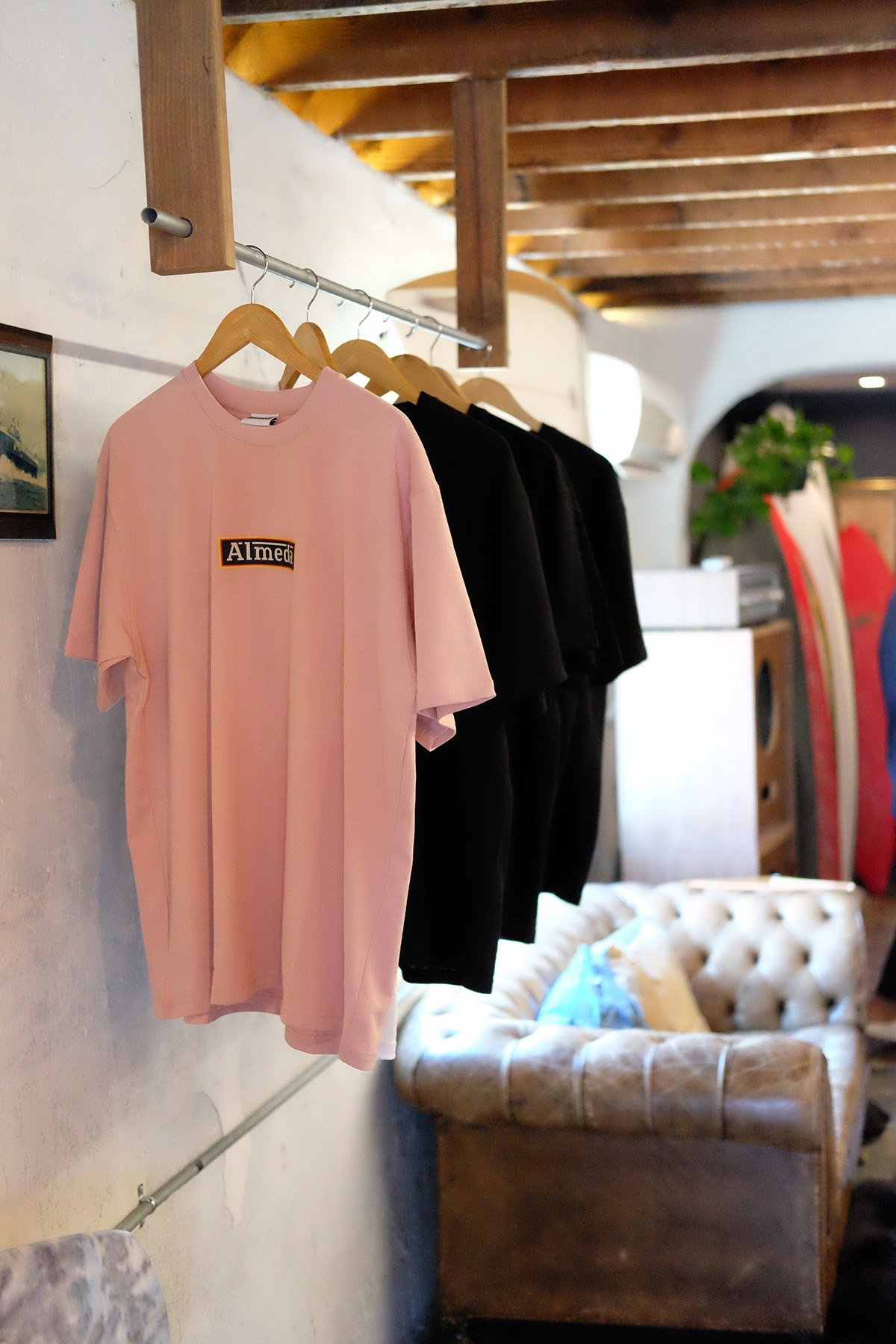
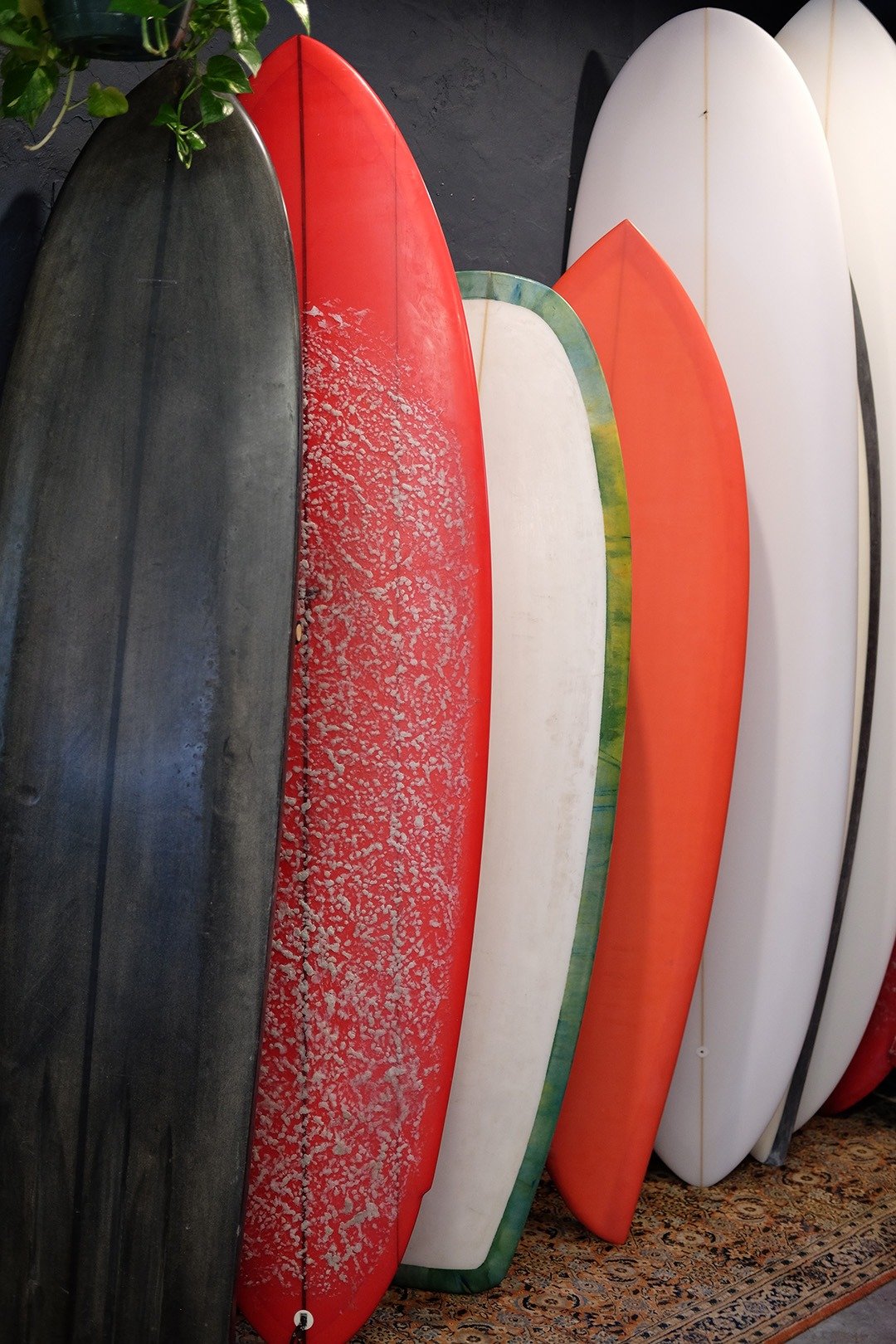
— 95% of Rockaway doesn't surf. Doesn’t even care for it. But one hundred percent of Rockaway could use a barbershop —
Right, because Rockaway might be known as a surf spot, but not everyone here surfs.
JG: And that's very important to us. I would say 95% of Rockaway doesn't surf. Doesn’t even care for it. But one hundred percent of Rockaway could use a barbershop. Well...I'm bald, but even bald people come in for a hot towel shave. [Laughs] And so could we have just turned Almeda into a surf gallery? Sure. We had the tools to do that. But I think it was important to be inclusive beyond that.
Can you speak a little bit more about your approach to design? Surfboard shaping is a perfect example of form following function; these beautiful objects that are also considered to every last millimeter or degree…
JF: Not all of them are — mine are [laughs].
That's how I'm a creative person. Like I have to touch things, I have to conceptualize it, and until I can see the object in its final form in my mind, I won't move on it. I can't see how it'll live in a perfect space in my mind. I don't want something to live in the world that doesn't live in a perfect space in my mind. Even if it doesn't seem perfect to the next guy, if I'm OK with it and I sign off on that, I'll do it. Cause I don't care what you think — when I look at that, I see something that I'm proud to have that represents me. And in some ways, it's a gift and a curse, because I get stuck a lot. Because if I can't envision this existing in the perfect way, I'm not going to move on it just yet. I need to think about it more.
Design in my world has to be functional. It just has to be functional. I make a craft. It could be considered art, but I think the difference between shaping a surfboard and painting a painting is like — there's no functionality to the painting, other than to please the user or challenge their thought process in some way, or make them uncomfortable. To stimulate a reaction.
A surfboard, though it can be looked at as artful or have the process be art, it's not. It's craft. Like, I'm making toys. [Laughs] I'm making something that someone wants to use and they want it to feel a certain way, so I'm having to interpret how those shapes make them feel. When you move colors around on a canvas or you move clay around on a wireform or an armature, you're not like "okay how is this going to serve me when I'm using it afterwards?" It removes that element of abstraction, you know? So that's where I feel like it is not art anymore. It's because you don't have full freedom. There are freedoms that you can take, there are liberties you can take with design that could work out well in your favor that make it seem abstract. But again, it all circles around functionality. Like I would never cut a curve in a board, or cut a corner off or shorten one side or do something else unless I had an idea as to why I was doing that and what feeling I'm looking to bring out of it for that. So, in a sense you get kind of stuck in this world of functionality and design in functionality. Yeah, it's an interesting thing. I actually have clay and I've made armatures and stuff. And I want to get into artwork that doesn't have the confinements of being functional. Because like...what would my voice sound like if I didn't have to worry about what functionality was? In a sense, I feel like there might be more range to my voice, my artistic voice. But I'm like singing a song that doesn't hit high notes in it. Surfboards are very pragmatic, they have to be functional at the end of the day, or else the guy's not gonna want it. And you have to consider what a person's needs are and how you develop the designs within that board to meet their needs, especially if you're making customs. Same thing goes for a coffee machine, right? You guys have a coffee machine where you push a button and you can have anything from an Americano, to a cappuccino to an espresso, to like — does it do flat whites?
Yeah you can just adjust the dial.
JF: The functionality of a machine like that is major! All the other machines that do that shit require you to do that. You steep the milk. You spin that thing. You have to bring the little carafe milk thing up and and down and you're massaging shit. That shit you push a button. Why? Because the design's good. You guys thought a little bit harder about it. You thought a little bit extra. So I always like to bring that to the table, but in terms of making surfboards — when I'm actually setting out to execute on it, I don't do anything better. In life, I don't do anything better. Sometimes I enter these realms of unnecessary overthinking, kind of savant level...I'm like "this is too much! It's a fuckin' surfboard! I'm gonna make $350 off this thing. I’m overthinking about it! This guy doesn't even know how to surf; he's complaining about the color. What am I doing?
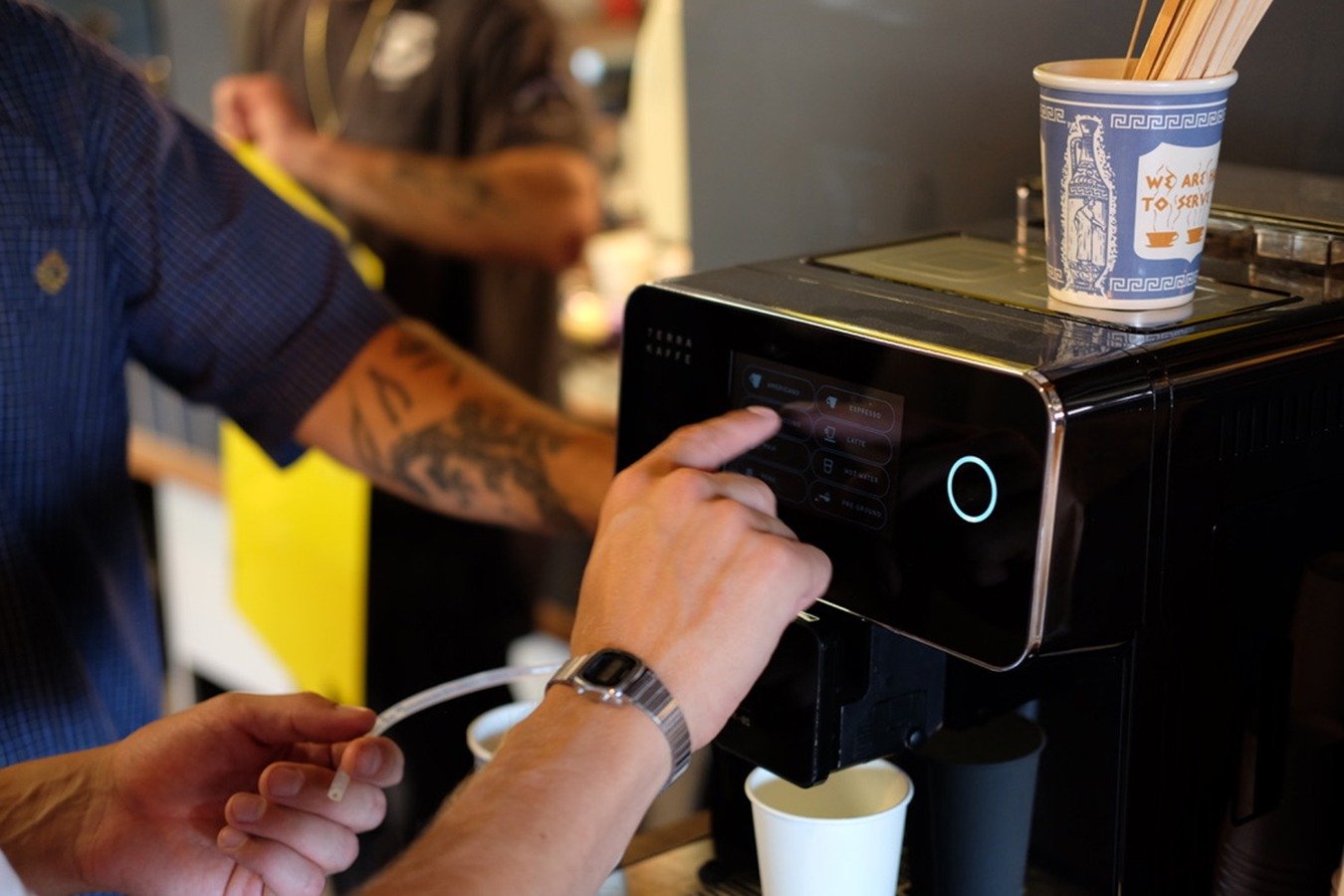
JG: As a bystander, though, and as a friend — Joe has always experimented beyond the pale. Like bringing functionality into surf crafts that, at-a-glance, may not appear functional.
And in a way that’s its own art.
JF: Yeah it's its own art in the same way dancing is an art. It's like the movement you interpret. Like the gesture is the message. The gesture is the dance, you know what I mean? There are moments of it where someone is taking photos and it all looks super tasty and artful. Everyone wants to be a shaper, but no one wants to be a glasser. Because it looks cool but there’s a lot more function baked in.
And what about the design of the shop? How did you conceptualize Almeda from this design angle?
JG: I think in terms of the shop for us, the biggest factor for design here was actually limitation. Like, we only had so much money, we only had so much time, we only had so much know-how, we only had so many materials available. There were all these limitations — there's building codes. So you're looking at a blank canvas and really the limitations are what fills the canvas. Because if someone gave us $10 Million in ten years to do whatever we wanted, would it look like this? I'm not sure. And then also — flood zones. We're in a huge flood zone. The largest part of our effort was to make sure we could accommodate up to 36 inches of water. So if we get 24 inches of water overnight tonight, we don't have to do anything. Just pump it out, hose it off, and keep going. Ya know? That's it. Just bring the hose inside, clean up, and keep going. So we lifted all the drywall, poured cement and did a cement floor. We took a lot of precautions that way. So in terms of design, what spoke the loudest was eliminating what we can't do, basically. Ya know what I mean?
That sounds similar to the functionality element Joe was talking about.
JG: Yeah it actually is [laughs]. I didn't think of that. There you go.
JF: For us, a lot of the movements we make have to really work, you know? So the emphasis on design and functionality and planning is held at much higher regard for guys like us. Because there's not really a whole lot of room for error. We're so close to crashing and burning at any time. There's not a huge cushion for error. But as much as we try to be business partners and be responsible and give each other a kick in the ass (it's more so Graham kicking mine, and rightfully so), we also have to take on this ability to be soft with one another.
We both come from kinda rough and tumble backgrounds. We were all brawlers when we were kids and we’ve been through some sort of heavy traumatic shit. So with this, the question of functionality is also about how this business provides for us. But on the other hand, it’s about how much fun we can have and what that fun looks like to the people who hang out here. Whether it's packaged and presented and marketed or not. So when people come in, what is their experience in the shop? We're always balancing this thing out. And in a sense, that's design, too. Cause we're figuring out how we want to design the way that this business works for us. We want to figure out how we design this business to provide for our lives, we want to figure out how we design this business to create an experience for people who come into this space.
And that was a hard thing to do amidst a worldwide pandemic.
JG: Amidst the pandemic, amidst social unrest, amidst the changing work from home culture, amidst the changing landscapes of brick and mortar and eCommerce spaces, and amidst the diversity that's around us all the time. We're in this whack-a-mole game of supply and demand. And we just play it the whole time. And people from all over the neighborhood and city come in and the question becomes what music do you play? Why are two people who seem to have nothing in common both want to rep the same Almeda shirt?
The best way to design the ethos is to just make sure you don't take credit for it. And Joe and I just don't. And I think that also radiates. Like we don't ever pat ourselves on the back or each other on the back. Being like [jokingly] "Oh wow we really have such a diverse group of people here today." Like it's not like that.
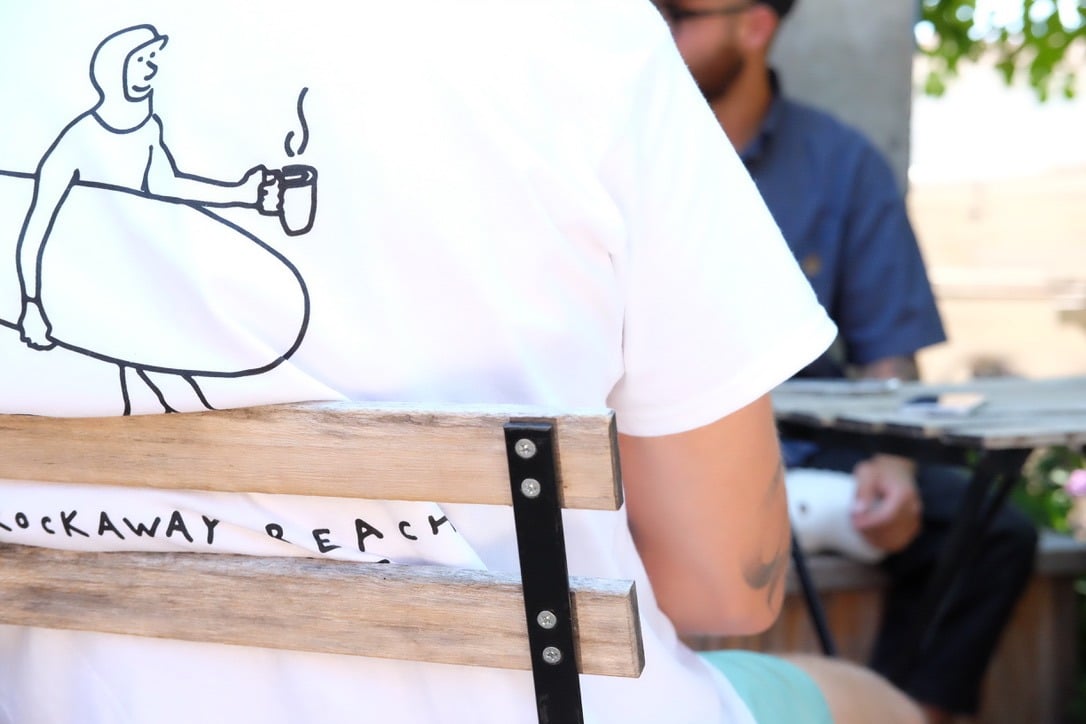
JF: It’s just good vibes, you know? Mi casa es su casa, dude. Make yourself at home. Sit on the couch, put your feet up. Like all that. That's how we are. We're not doing that because we have this space and we want to create this environment. If we didn't have this fuckin' space and you came to my house, I would tell you the same shit. It's just how we are. And I think that's good, and I think that the way that we are and the way that we do things is the way that we wish to see other people doing them in the world. And the only way to affect that sort of change is to do it ourselves, you know?
JG: And just bringing people together who wouldn't otherwise find themselves together.
—
You can follow The Almeda Club on Instagram @the_almeda_club or visit them in-person at 69-62 Almeda Ave, Queens, NY 11692. Get a cut while you’re at it, make good conversation, and enjoy a coffee from their very own TK-01.
